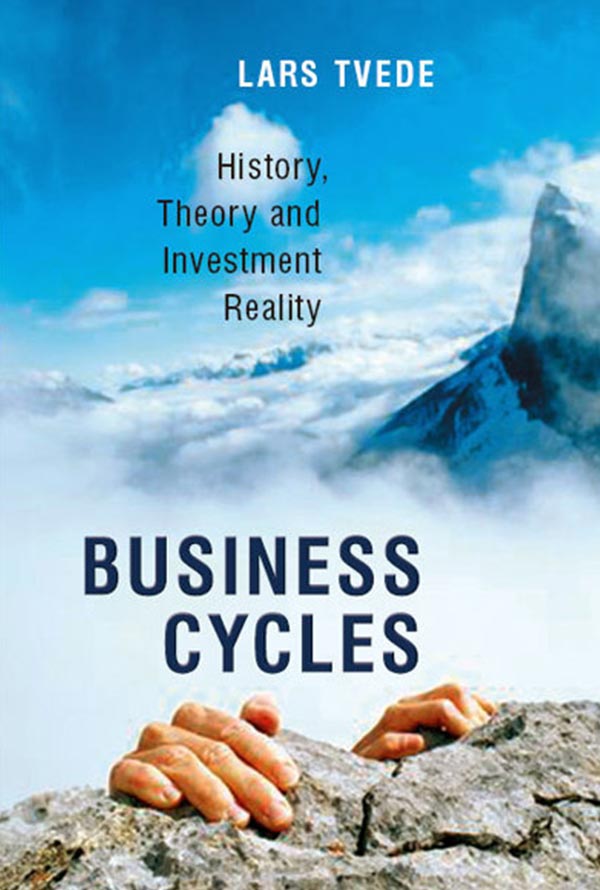Lars Tvede’s book comes at the right time. He analyze in depth with an original approach, the new forms taken by business cycles as well as their impact on financial markets.
This book is definitely a value, great to read – and is fun at the same time, for laymen and experts.
Lars Tvede’s Business Cycles is the best ever book about business and investment cycles.
As a venture capitalist I often find myself exposed to the fluctuations in the general economy for both the good, and the bad. Lars Tvede’s book is the best explanation of these cycles that I have ever read.
….That we are not only given these theories, but that these are also explained through instructive anecdotes about economists and the environment that influenced them is only enhancing the understanding in an interesting way.
Lars Tvede’s book not only excels in content, but he also managed to portray his findings in an entertaining and interesting fashion. It is recommended for both market professionals and beginners.
History, Theory and Investement Reality
“Early in my business career I often witnessed how people lost their business and money (in that order); not because they weren’t clever businessmen, but because they got blindsided by turns in business cycles. I saw many go bankrupt on that account.
In 1991 I decided to write a book about cycles that anyone could understand and which readers might find entertaining on top. I spent a lot of weekends and evenings at the Royal Copenhagen Library reading the old classics and finally developed a manuscript about crises and cycles with a historical perspective. It was published in 1992, with an introduction by Anders Fog Rasmussen, who was Denmark’s Minister of economic affairs and taxation at the time (He has since become Prime Minister and head of NATO).
I have since written several other books about economics, cycles and crises. I think the best so far is Business Cycles – History, Theory and Investment Reality. This is not a text book; the format is more like popular science. It is therefore long – almost 500 pages – but I tried hard not to make it long-winded. It has so many pages partly because of its numerous illustrations, and mainly because I have rolled four stories into one.
Four storys merged into one book
- Firstly the book provides a comprehensive and at times very entertaining history of economists, economic analysis and financial crises over the last 300 years.
- Secondly, it describes how economists work – exactly how they use math, statistics, history and even psychology to understand our economies.
- Thirdly, it explains and quantifies the main drivers of business cycles, which I list as «interest payments», «asset prices», «building construction», «capital spending» and «inventories». The reader will become very familiar with how each of these factors work, what drives their inherent instability and how much impact they have.
- Finally, it explains how gold, diamonds, art and collectibles and different categories of stocks, bonds, hedge funds, private equity funds, exchange rates and property behave over different categories of business cycles (property cycles, capital investment cycles and inventory cycles). This is rather complex, of course, but a large part of an investor’s task is in my opinion to be able to rotate from asset class to asset class as different types of business cycles play out.
Business Cycles was received very well in the press. The Economist gave a particularly good review, also listing it as one of four examples of how to write a readable and entertaining book about economics. I was also subsequently contacted by a journalist from CNBC, who had read it. He invited me for several appearances, including eventually as guest host.”
Covers and other Editions
This book has been published in international markets in several other languages and editions.









